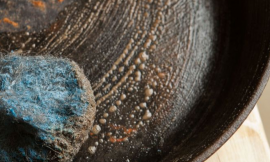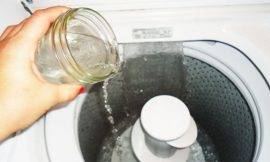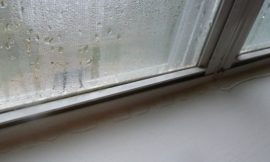
Have you ever opened your washing machine only to be greeted by a musty smell or an unsightly patch of mold? You're not alone! A staggering 60% of people encounter this issue at least once. Mold thrives in the warm, moist environment that washing machines provide, making understanding how to clean and prevent it critical for every laundry user. In this article, we’ll explore simple and effective cleaning methods, preventative measures, and tips to keep your washing machine mold-free. Let’s dive in and reclaim your washing machine’s freshness!
Understanding Mold in Washing Machines
What is Mold?
Mold is a type of fungus that can thrive in various environments. There are several types of mold, but the most common ones found in homes include black mold and mildew. Both can cause health issues and can damage your appliances.
Why Washing Machines are Vulnerable
Washing machines are particularly susceptible to mold growth due to the ideal conditions for their proliferation. The warm and moist environment created during wash cycles offers a perfect breeding ground for mold spores, especially in places that don’t dry out completely.
Signs of Mold in Your Washing Machine
Visual Indicators
Keep an eye out for visual signs of mold in your washing machine. Black spots, discoloration, and the presence of mildew around the door seal or in any crevices are key indicators that mold may be lurking in your machine.
Olfactory Signs
If your washing machine emits a musty odor, it’s a sign that mold may be present. This smell can be quite persistent and is not something to ignore, as it indicates that moisture and mold are currently at work.
How to Effectively Clean Mold from Your Washing Machine
Cleaning Materials Needed
When it comes to cleaning mold, you'll need to decide between household cleaners and specialized mold removers. While household bleach and vinegar can help with light mold issues, specialized mold removers can be more effective for severe infestations.
Step-by-Step Cleaning Instructions
To begin, start by removing the detergent drawer and any other removable components. Next, scrub these areas with hot, soapy water or your chosen cleaning solution. Once that’s done, run a bleach cycle by setting your machine to an empty hot wash with bleach added. Be sure to thoroughly rinse afterward to remove any residue.
Best Practices for Preventing Mold Growth
Routine Maintenance Tips
Prevention is key! Keep the washing machine door ajar after use to allow air to circulate and dry out any leftover moisture. Establish a routine cleaning schedule to keep mold at bay.
Proper Usage Guidelines
Avoid overloading your washing machine, as this can trap moisture and prevent proper drying. Also, using the right type of detergent can make a difference. High-efficiency detergents are typically best as they produce less suds and allow for better rinsing.
Additional Tips for Keeping Your Laundry Fresh
Ventilation Strategies
Ensuring proper air circulation around your washing machine is crucial. Whether it’s placing a fan in the laundry area or simply leaving the door open when not in use, good ventilation can help minimize moisture buildup.
Washing Machine Location
Lastly, consider the location of your washing machine. Ideally, it should be placed in a well-ventilated area, away from damp basements or areas prone to high humidity, to minimize moisture retention and reduce the likelihood of mold growth.
Conclusion
In summary, dealing with mold in washing machines doesn’t have to be an uphill battle. By recognizing the signs, implementing effective cleaning strategies, and following preventative measures, you can maintain a mold-free washing machine. Your laundry deserves to be fresh and clean, so take action today! If you found this guide helpful, share it with friends or family who may also benefit from a clean machine.





